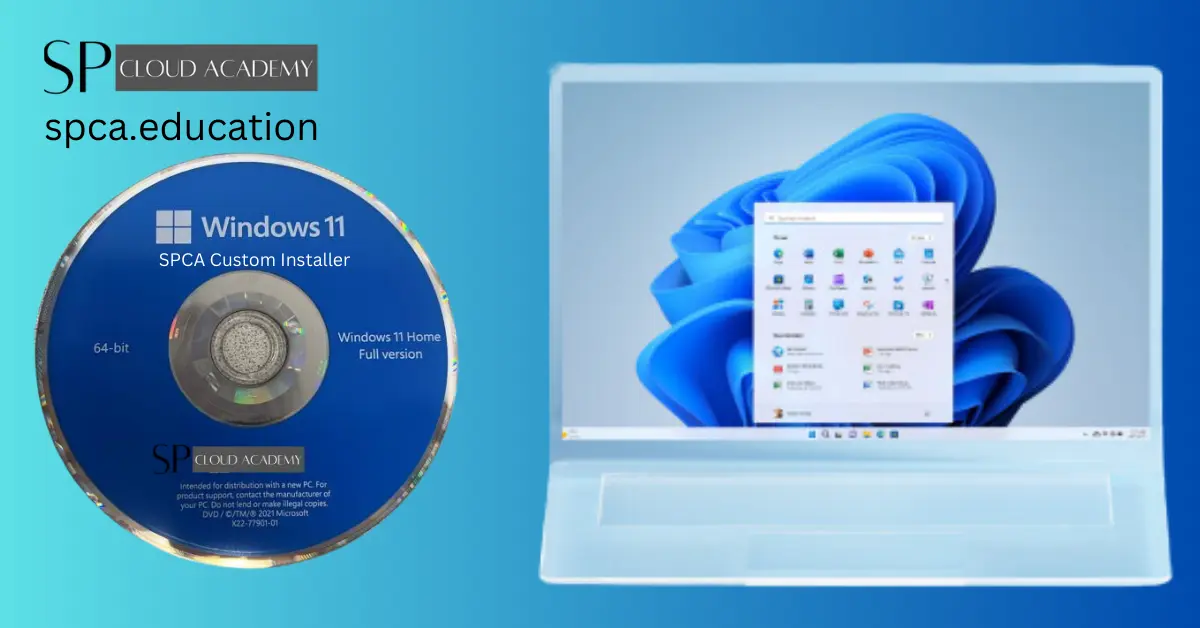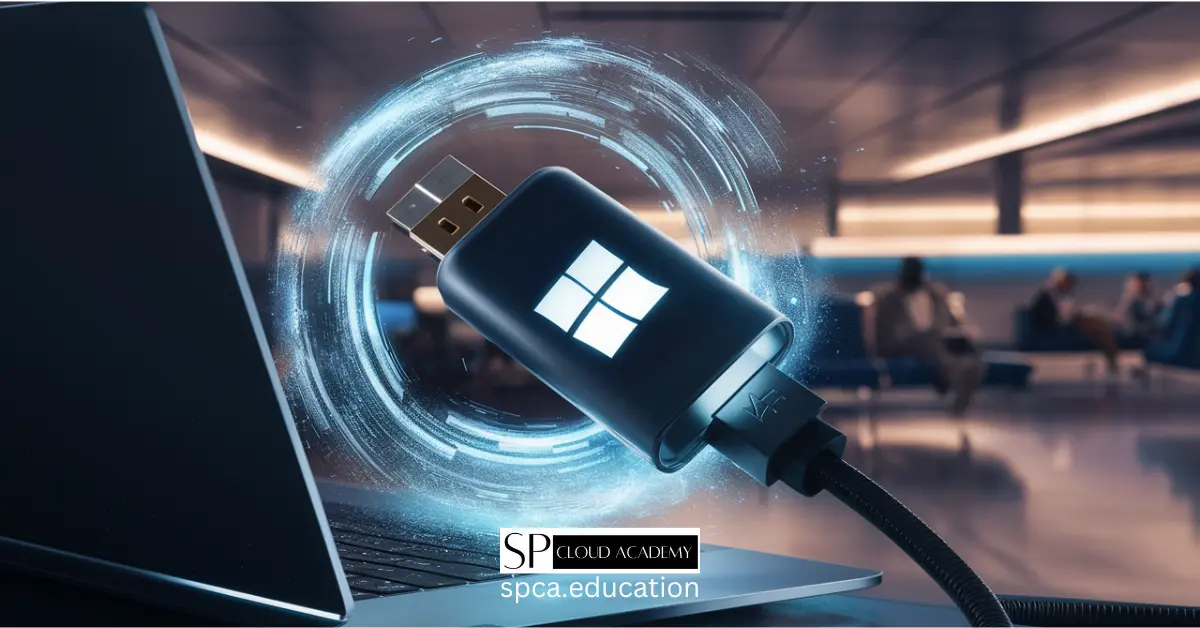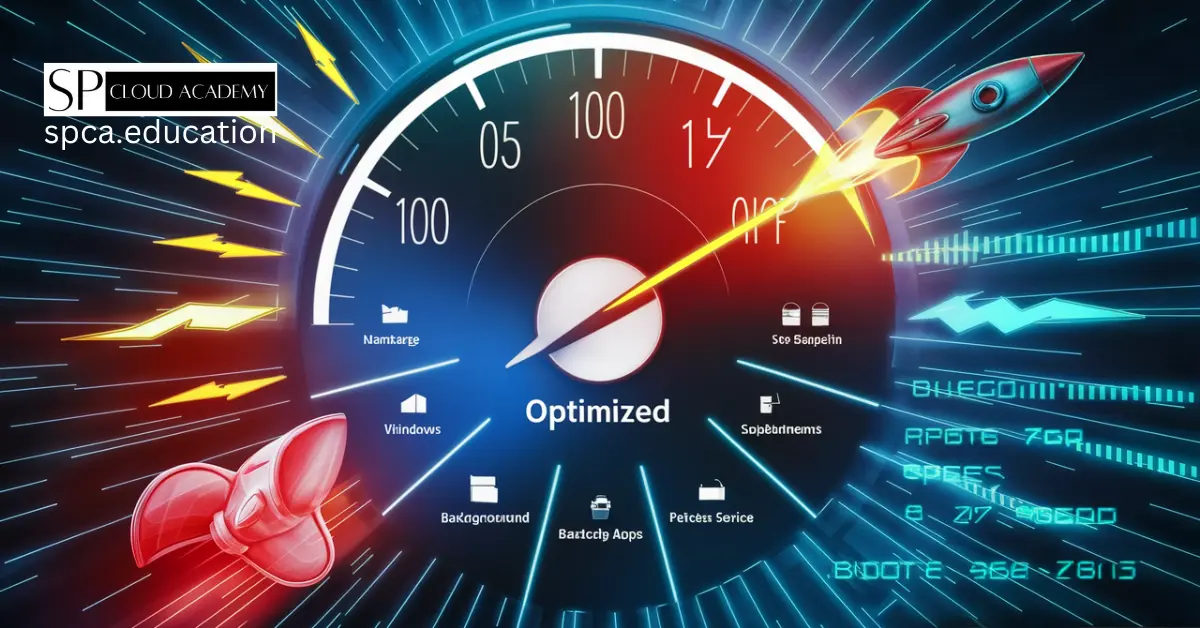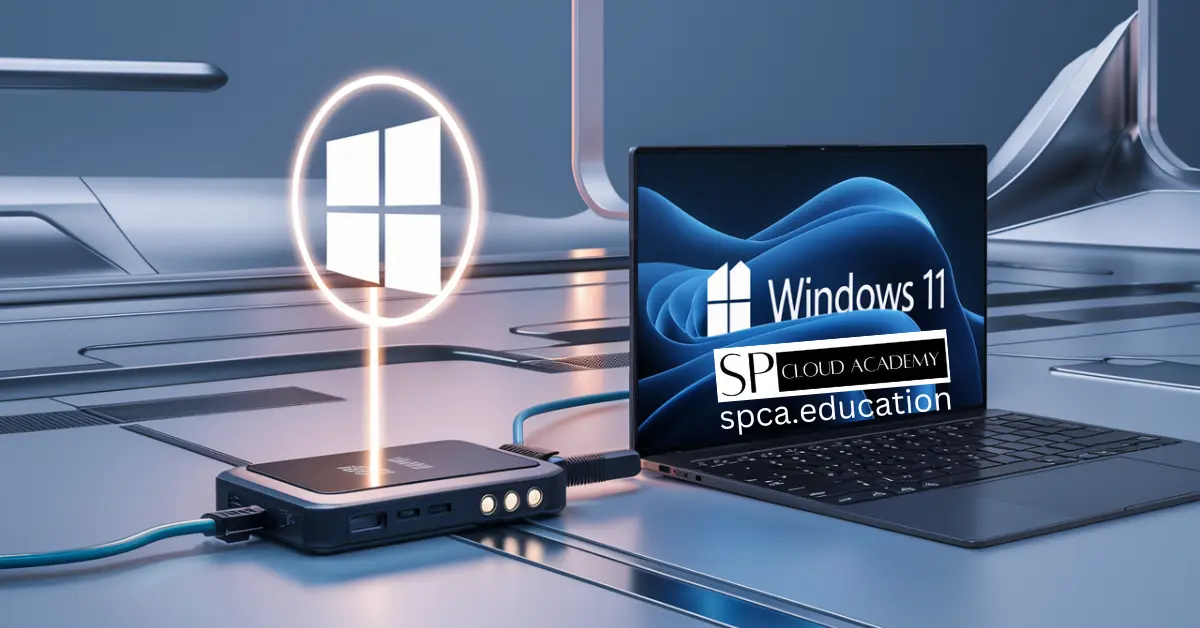The installation of an operating system is a fundamental step in setting up any computer, and Windows 11, the latest iteration of Microsoft’s iconic operating system, is no exception. While the default Windows 11 installation process is straightforward, it may not always meet the specific needs and preferences of users or organizations. This is where the concept of a custom Windows 11 installer comes into play.
A custom Windows 11 installer allows you to tailor the installation experience to your exact requirements. Whether you’re an IT professional looking to streamline the deployment of Windows 11 across an organization or a tech-savvy individual aiming to create a personalized setup, custom installers provide an invaluable level of flexibility and efficiency.
In this comprehensive guide, we’ll walk you through the intricate process of creating your own custom Windows 11 installer. You’ll learn how to tweak installation settings, inject drivers and updates, automate the setup, and build a bespoke installation package that suits your needs perfectly. By the end of this article, you’ll have the knowledge and tools to craft a Windows 11 installation experience that’s tailored precisely to your specifications.
So, if you’re ready to unlock the power of customization and take control of your Windows 11 installations, let’s dive into the world of creating a custom Windows 11 installer.
Windows 11 Original Installer vs Custom Installer
Windows 11 Original Installer refers to the standard installation process provided by Microsoft for Windows 11. It is the default method for installing the operating system on a computer. The Windows 11 Original Installer offers a basic, out-of-the-box installation with standard settings, default drivers, and bundled applications. Users typically interact with the setup process, configuring settings such as language, region, and user accounts manually during installation.
Custom Installer, on the other hand, is a specialized installation method created by users or IT professionals to tailor the Windows 11 installation to specific needs and preferences. It involves customizing various aspects of the operating system, such as user accounts, network settings, applications, drivers, and system configurations. A Custom Installer often includes an unattended installation answer file (Autounattend.xml) that automates the setup process, reducing the need for manual user intervention. This approach allows for a more efficient and personalized Windows 11 installation, making it suitable for mass deployments, system administrators, or individuals who want a customized Windows experience.
Here’s a comparison table highlighting the differences between the Windows 11 Original Installer and a Custom Installer:
| Aspect | Windows 11 Original Installer | Custom Installer |
|---|---|---|
| Customization | Limited, standard settings | Highly customizable |
| Automation | Manual setup process | Automated setup with answer file |
| Driver Integration | Default drivers included | Custom drivers injected |
| Updates | Includes basic updates | Can include latest updates |
| Applications | Standard bundled apps | Custom apps and software |
| Network Settings | Standard configuration | Custom network settings |
| User Accounts | Standard user creation | Pre-configured user accounts |
| Efficiency | Standard installation | Streamlined and efficient |
| Deployment | Single system installation | Suitable for mass deployment |
| Flexibility | Limited flexibility | Tailored to specific needs |
| Ease of Use | User intervention needed | Minimal user intervention |
The custom installer allows for a highly personalized and efficient Windows 11 installation, while the original installer provides a standard setup process. Depending on your needs and preferences, you can choose the most suitable option.
Preparations
Before embarking on the journey of creating a custom Windows 11 installer, there are several essential preparations you need to make. Properly setting up your environment ensures a smooth and successful customization process.
1. System Requirements
Before you begin, ensure that you have access to the necessary hardware and software. Here are the key requirements:
- A Windows PC: You’ll need a computer running Windows to perform various customization tasks.
- Sufficient Disk Space: Ensure you have enough free space to download and store Windows 11 installation files, drivers, and tools.
- Internet Connection: A stable internet connection is crucial for downloading Windows 11 ISO files and updates.
- USB Drive: You’ll need a USB drive with sufficient storage capacity (typically 8GB or more) to create a bootable installer.
2. Download the Windows 11 ISO
To start customizing Windows 11, you’ll need the official Windows 11 installation files in ISO format. Here’s how to obtain them:
- Visit the official Microsoft website or authorized distributors to download the Windows 11 ISO file. Ensure you’re obtaining it from a trusted source to avoid malware or tampered files.
3. Create a Bootable USB Drive
Once you have the Windows 11 ISO file, you’ll need to create a bootable USB drive. This will allow you to install Windows 11 on target systems. You can use tools like Rufus or the Windows Media Creation Tool to accomplish this:
- Rufus: Download and install Rufus, a free and open-source tool for creating bootable USB drives. Follow the tool’s instructions to create your bootable Windows 11 USB drive.
- Windows Media Creation Tool: If you prefer an official Microsoft tool, you can use the Windows Media Creation Tool to create a bootable USB drive. Download and run the tool, and it will guide you through the process.
4. Backup Your Data
Before proceeding with any customization or installation, it’s crucial to back up any important data on your computer. Customizations and installations can sometimes go awry, so having a backup ensures that your data remains safe. You can use external hard drives, cloud storage, or a backup software solution to create a reliable backup of your files and documents.
With these essential preparations in place, you’re now ready to delve into the customization of your Windows 11 installer. In the next sections, we’ll guide you through the process of creating a custom Windows 11 image and preparing it for deployment.
Customizing the Windows 11 Image
Once you’ve prepared your environment and obtained the Windows 11 ISO, it’s time to start customizing the Windows 11 image. This step allows you to tailor the operating system to your specific needs and preferences.
1. Introduction to Windows Imaging and Configuration Designer (ICD)
- Windows ICD: Windows Imaging and Configuration Designer is a powerful tool provided by Microsoft to create and customize Windows images for deployment. It allows you to create provisioning packages that define various settings and configurations during installation.
- Downloading and Installing Windows ICD: If you haven’t already, download and install Windows ICD on your Windows PC. You can find it in the Windows Assessment and Deployment Kit (ADK).
2. Creating a New Provisioning Package
- Starting a New Project: Launch Windows ICD and start a new project. Give it a meaningful name related to your customization project.
3. Customization Options
Now, let’s explore the various customization options available to you:
- User Accounts and Passwords: Customize user accounts, set passwords, and define account types. This is especially useful if you want to create pre-configured user accounts during installation.
- Network Settings: Configure network settings, such as domain join, workgroup settings, and network profiles. Ensure that Windows 11 connects seamlessly to your network environment.
- Applications and Drivers: Choose which applications and drivers you want to include in your custom Windows 11 installation. You can pre-install specific software or drivers to save time during setup.
- Windows Settings and Features: Customize Windows features, privacy settings, and system configurations. You can enable or disable certain features, configure privacy options, and specify system preferences.
4. Validating the Package
Before proceeding, it’s essential to validate your provisioning package to ensure it adheres to Windows requirements and doesn’t contain errors or conflicts. Windows ICD provides validation tools to help you identify and fix any issues in your customization package.
By customizing the Windows 11 image with these options, you can create an installation experience that aligns precisely with your requirements. In the next section, we’ll delve into the process of injecting drivers and updates into your custom Windows 11 image.
Injecting Drivers and Updates
After customizing the Windows 11 image to match your specific requirements, the next crucial step is injecting drivers and updates into the custom image. This ensures that your installation includes the necessary hardware drivers and the latest system updates for a smooth and up-to-date experience.
1. Downloading and Organizing Drivers
Before you can inject drivers, you need to have them available. Here’s how to obtain and organize the necessary drivers:
- Identify Hardware: Identify the hardware components in the target systems for which you need drivers. Common hardware includes graphics cards, network adapters, and storage controllers.
- Download Drivers: Visit the manufacturers’ websites or reputable sources to download the latest compatible drivers for each hardware component. Ensure that you have both 32-bit and 64-bit versions if applicable.
- Organize Drivers: Create a well-organized folder structure to store your drivers. You might organize drivers by hardware type or manufacturer to make it easier to locate and inject them later.
2. Integrating Drivers
Once you have the drivers ready, you can proceed with integrating them into your custom Windows 11 image. The most common tool for this task is the Deployment Image Service and Management Tool (DISM).
- Using DISM: Here’s a general process for integrating drivers using DISM:
- Open a Command Prompt or PowerShell window with administrator privileges.
- Use the
DISMcommand to mount the Windows 11 image file (usually located within your ISO) to a temporary directory:bashCopy codedism /mount-image /imagefile:C:\path\to\install.wim /index:1 /mountdir:C:\path\to\mount - Inject drivers using the
DISMcommand. ReplaceC:\path\to\driverswith the path to your driver directory:bashCopy codedism /image:C:\path\to\mount /add-driver /driver:C:\path\to\drivers /recurse - Commit changes and unmount the image:bashCopy code
dism /unmount-image /mountdir:C:\path\to\mount /commit
3. Applying Windows Updates
To ensure your custom Windows 11 installer includes the latest security updates and improvements, consider integrating Windows Updates:
- Download the latest Windows Update packages from the Microsoft Update Catalog or use Windows Update itself.
- Use DISM or other appropriate tools to apply the updates to the mounted image.
- Don’t forget to commit changes and unmount the image after updating.
By injecting drivers and applying Windows updates, you’ll create a custom Windows 11 image that’s not only tailored to your preferences but also optimized for the hardware on which it will be installed.
Creating an Unattended Installation Answer File
An unattended installation answer file, also known as Autounattend.xml, is a crucial component of your custom Windows 11 installer. It automates the installation process by providing answers to the setup prompts that would otherwise require user input. This helps create a seamless and consistent installation experience. Here’s how to create one:
1. Introduction to Unattended Installation
- What is an Unattended Installation? An unattended installation is a method of installing Windows without user interaction. It’s particularly useful for system administrators or individuals deploying Windows on multiple computers.
2. Overview of the Windows Answer File (Autounattend.xml)
- Understanding the Answer File: The answer file, often named Autounattend.xml, contains configuration settings and answers to questions that Windows Setup asks during installation.
- XML Format: The answer file is written in XML format, which is structured and hierarchal. XML is used to define various aspects of the installation, such as disk partitioning, product key, and user account details.
3. Customizing the Answer File
To create an unattended installation answer file, you can use the Windows System Image Manager (SIM) tool, which is part of the Windows Assessment and Deployment Kit (ADK). Here’s how to get started:
- Download and Install Windows ADK: If you haven’t already, download and install the Windows ADK on your computer.
- Launch Windows SIM: Open the Windows System Image Manager tool.
- Create a New Answer File: In Windows SIM, create a new answer file or open an existing one if you have a template.
4. Customization Options
Now, let’s explore the various customization options you can include in your answer file:
- Language and Region Settings: Specify the language, region, and keyboard settings for the installation.
- Product Key (if applicable): You can include a valid Windows 11 product key in the answer file to automate product activation.
- User Account Setup: Define user accounts, passwords, and account types. This is particularly useful for setting up default user accounts.
- Disk Partitioning: Specify how you want to partition the hard drive(s) during installation.
- Windows Features and Settings: Customize Windows features, system preferences, and privacy settings.
5. Using Windows SIM to Create and Validate the Answer File
- Windows SIM Interface: Familiarize yourself with the Windows SIM interface. It provides a tree structure where you can navigate through the various settings and properties.
- Configuring Settings: In the interface, configure the settings based on your customization requirements. As you make changes, Windows SIM will automatically generate the XML code for your answer file.
- Validation: Before saving the answer file, use the validation feature in Windows SIM to check for errors or missing settings. Correct any issues that arise during validation.
By creating an unattended installation answer file, you’ll ensure that your custom Windows 11 installer not only reflects your preferences but also streamlines the installation process. In the next section, we’ll cover how to build the custom installer using your customizations and answer file.
Building the Custom Installer
With your Windows 11 customization, driver integration, and answer file ready, it’s time to bring everything together and build your custom Windows 11 installer. This installer will contain all your customizations and settings.
1. Combining Customizations
To create your custom installer, you’ll need to combine your customizations, injected drivers, and the answer file. Here’s how to do it:
- Merging the Provisioning Package: Begin by incorporating the provisioning package you created in the earlier steps into your customized Windows 11 image.
- Integrating the Answer File: Make sure your Autounattend.xml answer file is included in the installation media. This file will automate the setup process during installation.
2. Creating a New ISO
Once you’ve combined your customizations, it’s time to create a new Windows 11 ISO image that includes all your modifications. This ISO will serve as your custom installer. There are various methods to achieve this, including:
- Using DISM: You can use the Deployment Image Service and Management Tool (DISM) to create a new Windows 11 ISO with your customizations. Here’s a simplified outline of the process:
- Mount the original Windows 11 ISO to a temporary directory using
DISM. - Copy and replace the customized files, including the Autounattend.xml file, into the mounted directory.
- Use
DISMto create a new install.wim file. - Build the new ISO using software like Rufus or the Windows Media Creation Tool.
- Mount the original Windows 11 ISO to a temporary directory using
3. Testing the Custom Installer
Before deploying your custom Windows 11 installer to target systems, it’s crucial to test it in a controlled environment, such as a virtual machine or a spare computer. Testing ensures that your customizations and answer file work as expected and that the installation process proceeds without issues.
- Virtual Machine Testing: Create a virtual machine using virtualization software like VirtualBox, VMware, or Hyper-V. Use your custom ISO to install Windows 11 on the virtual machine.
- Physical Machine Testing: If possible, test your custom installer on a physical computer to verify its compatibility with real-world hardware.
- Troubleshooting: During testing, pay attention to any errors or unexpected behaviors. This is your opportunity to identify and resolve issues before deploying to multiple systems.
Once you’ve successfully tested your custom installer and are confident in its performance, you’re ready to proceed to deployment. In the next section, we’ll cover how to deploy and install Windows 11 using your custom installer.
Deployment and Installation
After creating your custom Windows 11 installer, it’s time to deploy and install Windows 11 on target systems. This section will guide you through the process of using your custom installer to set up Windows 11 on multiple computers.
1. Using the Custom Installer
To deploy Windows 11 with your custom installer, follow these general steps:
- Prepare Target Systems: Ensure that the systems you want to install Windows 11 on meet the necessary hardware requirements and have been backed up if needed.
- Boot from the USB Drive: Insert the bootable USB drive containing your custom Windows 11 installer into the target system’s USB port. Then, boot the computer from the USB drive. You may need to access the BIOS or UEFI settings to set the boot order.
- Automated Installation: Windows Setup will begin automatically, and the unattended installation process will take over. Your answer file (Autounattend.xml) will provide the answers to setup questions, such as language, time zone, and product key.
2. Troubleshooting Common Installation Issues
During the deployment and installation process, you may encounter common issues. Here are some troubleshooting tips:
- Driver Problems: If certain hardware components are not working correctly after installation, consider revisiting your driver integration process. Ensure that you’ve injected the necessary drivers.
- Validation Errors: If you encounter errors during the installation process, review your Autounattend.xml file for syntax errors or incorrect settings. Use validation tools to identify issues.
- Hardware Compatibility: Ensure that your custom Windows 11 image and drivers are compatible with the target hardware. Compatibility issues can lead to installation problems.
- Network Configuration: If you have specific network requirements, double-check that your answer file correctly configures network settings during installation.
3. Post-Installation Tasks
Once Windows 11 is successfully installed on a target system, consider performing the following post-installation tasks:
- Verify Customizations: Ensure that all your customizations, applications, and settings have been applied as intended.
- Activate Windows: If you did not include a product key in your answer file, you’ll need to activate Windows manually after installation.
- Software Updates: Run Windows Update to ensure that the latest security updates and patches are applied.
- Additional Configuration: Depending on your needs, you may need to perform additional configuration tasks, such as joining a domain or setting up user accounts.
4. Scaling Deployment
If you plan to deploy Windows 11 across multiple systems, consider using deployment tools like Microsoft Deployment Toolkit (MDT) or Windows Deployment Services (WDS). These tools streamline the deployment process, making it more efficient for large-scale installations.
By following these deployment and installation guidelines, you can ensure that your custom Windows 11 installer serves as an effective and reliable solution for setting up Windows 11 on multiple computers.
Conclusion
Creating a custom Windows 11 installer is a powerful way to tailor the installation experience to your specific needs, whether you’re an IT professional streamlining deployments across an organization or an individual looking to personalize your setup. Throughout this guide, we’ve explored the intricate process of crafting your own Windows 11 installation solution, from preparing your environment to deploying Windows on target systems.
In summary, here are the key takeaways from this journey:
- Preparation is Key: Ensure you have the necessary hardware, software, and backup strategies in place before diving into customization.
- Customization is Flexible: Windows Imaging and Configuration Designer (ICD) empowers you to customize various aspects of Windows 11, from user accounts to network settings.
- Driver and Update Integration: Injecting drivers and applying Windows updates ensures that your custom installer works smoothly on a wide range of hardware and is up-to-date.
- Automated Setup: Creating an unattended installation answer file simplifies and automates the setup process, reducing user intervention during installation.
- Building the Custom Installer: Merging customizations, integrating the answer file, and creating a new ISO file consolidate all your modifications into a single installation media.
- Testing is Crucial: Before deployment, thoroughly test your custom installer on virtual or physical machines to identify and address any issues.
- Deployment and Troubleshooting: Deploy Windows 11 using your custom installer, troubleshoot common installation problems, and perform post-installation tasks.
- Scaling Deployment: For larger deployments, consider using deployment tools like MDT or WDS for efficiency.
By following these steps and best practices, you can harness the power of customization and automation to create a Windows 11 installation experience that aligns perfectly with your requirements.
Remember that the world of Windows customization is vast, and there’s always more to explore. Microsoft provides extensive documentation and resources to help you further refine your custom Windows 11 installer.
As technology continues to evolve, having the ability to create custom Windows installers will be an invaluable skill, ensuring that your systems and those of others are configured exactly as needed, with efficiency and precision.
Now, armed with the knowledge and tools you’ve gained, you’re ready to embark on your journey to create the ideal Windows 11 installation experience for your unique needs.
Additional Resources
To further expand your knowledge and capabilities in creating custom Windows 11 installers, consider exploring the following additional resources:
1. Microsoft Documentation:
- Windows Assessment and Deployment Kit (ADK): Visit the official Microsoft website to download the Windows ADK, which includes essential tools for Windows deployment and customization.
- Windows ICD Documentation: Dive into Microsoft’s documentation for Windows Imaging and Configuration Designer (ICD) to gain a comprehensive understanding of this customization tool.
- Deployment and Imaging Tools Environment (DISM): Explore the DISM documentation to learn more about image management and deployment using the Deployment Image Service and Management Tool.
2. Community Forums:
- Microsoft Tech Community: Engage with the Microsoft community by joining discussions, asking questions, and sharing your experiences related to Windows deployment and customization.
3. Books and Tutorials:
- Books: Look for books dedicated to Windows deployment and customization. They often provide in-depth guidance and best practices.
- Online Tutorials: Numerous websites and YouTube channels offer tutorials and step-by-step guides for creating custom Windows installers. Search for tutorials that match your specific customization needs.
4. Deployment Tools:
- Microsoft Deployment Toolkit (MDT): Consider using MDT, a powerful and free deployment tool from Microsoft, to automate and customize Windows installations at scale.
- Windows Deployment Services (WDS): Explore WDS, a server role in Windows Server, for network-based installations of Windows operating systems.
5. Training and Certifications:
- Microsoft Learning Paths: Microsoft offers learning paths and certifications related to deployment and Windows administration. These can help you deepen your knowledge and skills.
- Online Courses: Platforms like Udemy, Coursera, and LinkedIn Learning offer courses on Windows deployment and customization.
6. PowerShell Scripting:
- PowerShell Scripting: If you want to take customization to the next level, consider learning PowerShell scripting. PowerShell allows you to automate complex tasks and further customize Windows installations.
7. Stay Updated:
- Keep Up with Windows Updates: Stay informed about the latest Windows 11 updates, features, and changes. Microsoft regularly releases updates that may affect your customizations.
- Community News and Blogs: Follow tech news websites, Windows-focused blogs, and forums to stay updated on the latest trends and best practices in Windows deployment.
Remember that the world of Windows customization is vast, and continuous learning and exploration will help you stay at the forefront of this field. Whether you’re a seasoned IT professional or an enthusiast, these additional resources will aid you in creating and maintaining efficient and customized Windows 11 installations.
Related Articles
SPCA Tutorials: https://spca.education/tutorials/



